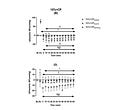I've talked a few times about the importance of measuring HRV while seated (or standing), as opposed to while supine (lying down).
In a recent study (which you can find here), blood pressure changes after exercise of different intensities were missed completely while supine, and clearly visible while seated or standing. This is exactly the same principle I have discussed in my blog.
From the study's conclusion:
"For both standing and seated postures, the higher exercise intensity led to larger reductions in blood pressures, whereas in the supine posture, the reduction in blood pressure was unaffected by prior exercise intensity".
By measuring intentionally, while seated, you can capture your body's response to exercise intensity in ways that are not possible while lying down (e.g. during sleep).
Something else wearables can't do, it seems.
Please see here for a discussion of body position and orthostatic stress in the context of HRV measurements.
Marco holds a PhD cum laude in applied machine learning, a M.Sc. cum laude in computer science engineering, and a M.Sc. cum laude in human movement sciences and high-performance coaching.
He has published more than 50 papers and patents at the intersection between physiology, health, technology, and human performance.
He is co-founder of HRV4Training, advisor at Oura, guest lecturer at VU Amsterdam, and editor for IEEE Pervasive Computing Magazine. He loves running.
Social:
Twitter: @altini_marco.
Personal Substack.






Is a daily routine for measuring while at your desk a good protocol? In the morning or afternoon?